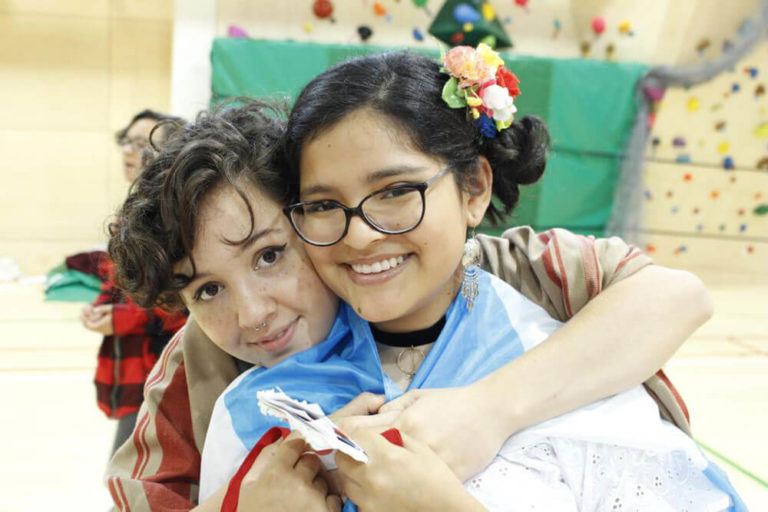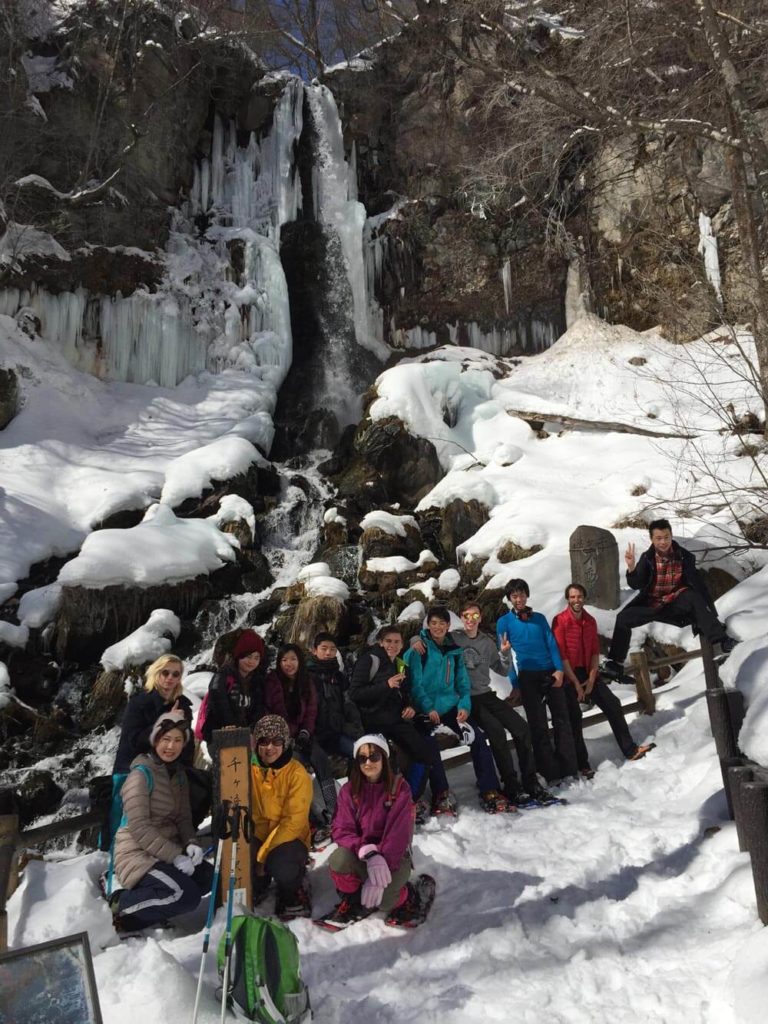Written by Gabriel (Class of 2020 / Philippines)
I glared at the dust and debris that encircled its edges while pondering how best to start the repair. In my hand was a drone I pulled off the dusty cupboard in the physics lab. Its poor state makes you wonder how it ended up in this state, yet more importantly, if it was still working. Someone else had the same question, and he needed me to take a look at it once more.
As I held it in my hand, I realized this was not new to me. Before I began my UWC ISAK Japan journey, I had gotten myself involved in a drone-building project. It was two years of sorting designs in countless sleepless nights, and holding failed flight tests while struggling to find open rice paddies. That project did not end the way I wanted, and the memory of this failure has weighed on me. But those memories also carry with them, the smell of burning transmitters, the sight of grass blades fell by plastic and the sound clack of snapping propellers which convinced me I needed to do it one more time. This was my chance for redemption.
A Leadership (“CAS”) Project at UWC ISAK had been looking for solutions for mapping the forest near campus, and commercial drone solutions would have placed them in a tight financial spot. It was a natural thing for me to bring up, why not use resources the school already owns? Why not repair a drone we already have? Somehow, they agreed to this proposition, and so began the story behind this drone project, which I bring to you.
Assembling the Team
First things first, I needed to find dedicated people to make this happen. Having brought it up once in a Makers Club Meeting, it was easy to find interested people. Timur (Class of 2022 / Russia), Benjamin (Class of 2022 / Greece), Nadeem (Class of 2020 / Pakistan), and I were absorbed with the idea of building a drone. They wanted to know how it worked and its inner workings. We made it our mission to get this drone to fly once more.
We started by looking at the inventory. After a simple sweep of the Physics Lab, we were surprised to find most of the parts still intact. A jumble of wires, electronics, and propellers was finely organized in a box as if they were always ready to be placed back into action. Looking at the dates of the part models and the receipts conveniently left in, we found out it was left untouched for at least three years – three years, mind you – of undisturbed storage. Seeing we didn’t have to buy much was a relief, and we only had to order a handful of replacements.
Dead on Arrival?
The following week was a moment of truth, was this project a viable pursuit or a lost cause? I could recall it was a sunny Saturday morning when we excitedly retrieved the drone. After a thorough 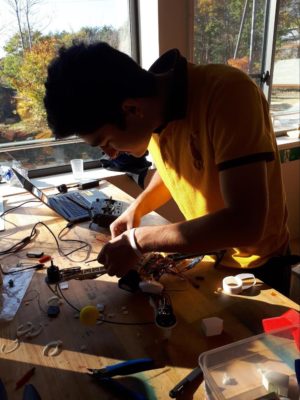 cleaning and pain-staking resoldering of the battery (nobody among us knew how!), it was only a matter of time before we could test if it still ran.
cleaning and pain-staking resoldering of the battery (nobody among us knew how!), it was only a matter of time before we could test if it still ran.
We were holding our breaths in anticipation, while slowly plugging it in. One, two, three beeps followed, the machine was still working.
We were dancing with joy at the fact, but the job wasn’t complete. I started teaching them how to set it all up as my drone-sense slowly began returning. It felt good getting back in the saddle.
After the setup and calibration, it was time to test. Unable to contain our excitement, we directly proceeded to the side of the gym to give it a test run. We went through the checklist before proceeding: props, batteries, GPS amongst all else. When we thought we had everything sorted, I gave Ben the remote while Nadeem hurriedly stepped aside after plugging the battery in – it was showtime!
Learning from Failure
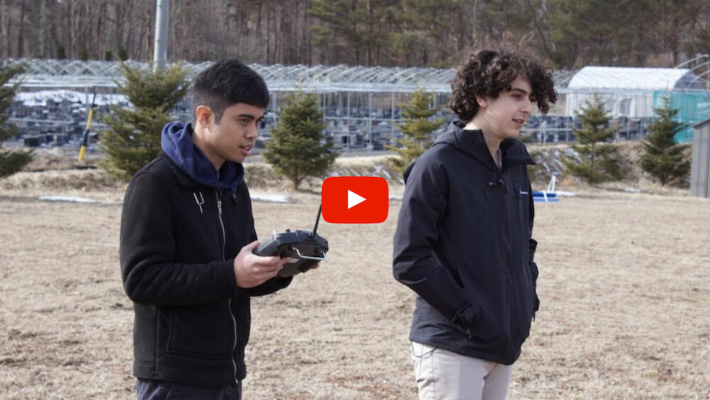 Well, as you can see, it didn’t work out as we had hoped. It was a bit soul-crushing to stop the hype train so abruptly, but nobody expected it to fly on the first attempt. Pages and pages of forums and tutorials occupied our minds for a long time had us banging our heads, trying to figure out what went wrong and how to fix it.
Well, as you can see, it didn’t work out as we had hoped. It was a bit soul-crushing to stop the hype train so abruptly, but nobody expected it to fly on the first attempt. Pages and pages of forums and tutorials occupied our minds for a long time had us banging our heads, trying to figure out what went wrong and how to fix it.
For days, we reviewed the footage while deliberating on what the actual issues were. We thought it was the screws, so we got replacements. The next time, the culprit was miscalibration, so we did a reset. The following weekend, it was the GPS, so we tested in an open field. It was a constant back-and-forth between outside and the lab. For every successive failed flight, an empirical diagnosis followed, and for each time, we knew we were getting closer to the goal.
It was not without sacrifices either: all of those missed Saturday sleep-ins, (which for an IB student feels like an eternity of slumber) and Wednesday afternoons, focused solely on this one drone which we didn’t even know could still fly. It took a lot of faith on our parts, to believe we weren’t wasting our time. A lot of persistence is necessary in these pursuits, and for us, it was that thought of the sweet moment it would fly that kept us going.
The Moment of Truth
And then it happened.
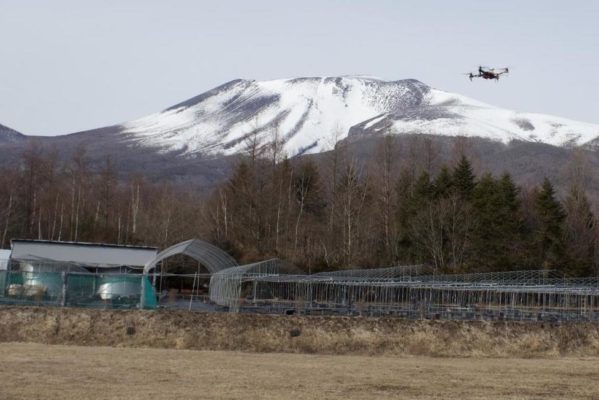 It was truly amazing what we all felt that day. The culmination of all our hard work was right before our eyes. The enormous sighs of relief mingled with the cool breeze brushing against our ecstatic faces as we looked up to the sky to see that one small drone cut through the open horizon. The feeling of triumph fleeted in our hearts and minds for the entire day, as the four of us ceaselessly celebrated this fantastic achievement.
It was truly amazing what we all felt that day. The culmination of all our hard work was right before our eyes. The enormous sighs of relief mingled with the cool breeze brushing against our ecstatic faces as we looked up to the sky to see that one small drone cut through the open horizon. The feeling of triumph fleeted in our hearts and minds for the entire day, as the four of us ceaselessly celebrated this fantastic achievement.
For me, it was not a new feeling, for it was on a day two years back that I had the same moment. I remember my share of the shouts of victory on that day. As that image of the past juxtaposes this recent occasion, I could not help but get a hint of sadness, for, in a way, I had to leave my previous team to move to UWC ISAK Japan, and along with them, the chance to repair the drone that took us two long years to build. And in restoring this drone, this object, this abandoned dream, I had my chance at redemption.
When you find yourself at the physics lab, you’ll find our drone project tucked in a corner, waiting for some tune-ups. I do not doubt that soon, ISAK students will carry this forward, work out the kinks, and complete the drone. The thrill and excitement we all shared will continue to drive our team members who remain at UWC ISAK to see this project through.
While viewing it one last time, I decided to stop thinking about how it came to be grounded and stuck. Now, I could only wonder how far it will go and for how long, out in the open sky.
Photo Credits: Benjamin (Class of 2022 / Greece)
